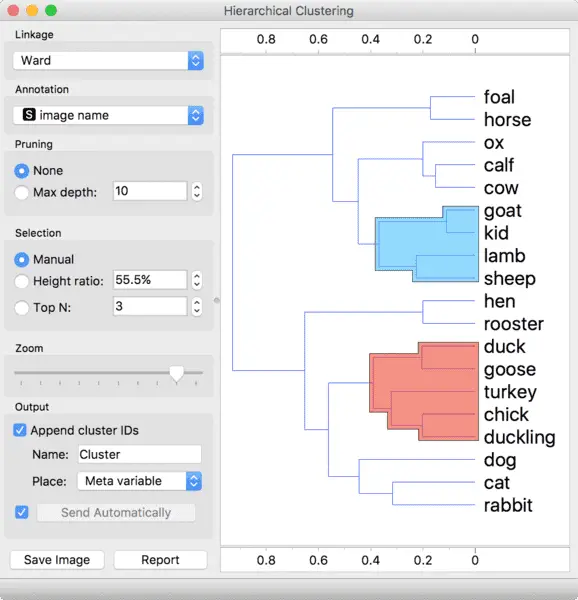5 Data Mining Methods Explained
Data mining methods are; predictive, descriptive, integrative, detective and cumulative methods.
It must be noted that the methods of data mining differ from the techniques of data mining; where the former refers to approaches used, and the latter refer to specific mechanisms involved in a data mining approach.
This implies that data mining techniques fall under (or within) the data mining methods. Both methods and techniques form what are referred to as data mining strategies.
This article discusses the data mining methods, as follows;
1). Predictive Method (as one of the Data Mining Methods)
As the name implies, predictive data mining method is the extraction of information from raw data by forecasting data points, based on observed trends or patterns [5].
An example of predictive data mining is the allocation of future values for the price of goods in a market sector, or for the relative value of a given currency.
The requirements for this method of data mining include historical and current data, as well as pre-designed algorithms for data analysis. A predictive model is the typical outcome of this method of data mining, and such a model is usually made up of identifiable patterns that form the basis of forecasting.
Predictive techniques are used to execute the method, and some examples of them are; regression and induction rule-modeling.
Problems that can be solved using the predictive data mining method are those which require decisions to be made in real-time. Such problems are found in various sectors and contexts including market analysis, neural network management, and industrial systems that rely on robotic technology.
2). Descriptive Method
Descriptive method of data mining is an approach that transforms data into information by categorizing data points into groups based on shared, identifiable attributes.
The function of descriptive method can be referred to as data characterization because it focuses on characteristics that can be used to define and simplify large volumes of data.
Both descriptive and predictive data mining aim to reveal trends from which knowledge can be gained from raw data.
Techniques that fall under descriptive data mining can also be referred to as descriptive models, and some examples of them are; correlation, clustering and association.

3). Integrative Method (as one of the Data Mining Methods)
Integrative data mining method is a specialized approach that is used where there is need to extract information from data points that are distantly related.
Another way to describe the scenario in which integrative data mining is required, is one in which datasets are sparsely distributed [7].
The integrative approach can be very helpful where the availability of data is limited, and/or where there is need to take raw data from multiple sections of a system and unify them to derive a common solution or knowledge.
A practical example of the use of this data mining method is in healthcare, specifically cases where machine learning and artificial intelligence are being used for complex diagnoses.
The diagnosis and monitoring of coronary heart disease based on historical and present data from various organs is a good instance of the application of integrative data mining in healthcare [3].
Businesses can also use integrative data mining alongside other methods, for decision-making that involves data from various sections or aspects of the business organization [6].
4). Detective Method
Detective method of data mining is often applied as a preliminary measure before another method is used.
In detective data mining, the goal is to extract individual data points, attributes or trends that can give clues regarding the informational content of raw data.
The method is required in cases that involve very large datasets, where there is need to extract detailed information from such enormous data.
Detective data mining implements hierarchical models like the decision-tree structure, and often functions alongside descriptive techniques like clustering, to increase its effectiveness and quality of results [4].
The method finds application in detail-oriented projects such as those involving medical research and legal investigation.
With regards to the latter (legal investigation), detective data mining can help to spot potentially-useful trends in large and/or complex investigation data, and can also be used to assess the quality/reliability of an investigation [1].
5). Cumulative Method (as one of the Data Mining Methods)
Cumulative method is used in Big Data Mining (BDM), where enormous amounts of data are involved.
It is a method that extracts information from data by summarizing and simplifying it into a more describable form.
The method is relevant where large amounts of public data must be analyzed, such as with data from educational or professional assessments. It is also useful for medical diagnoses requiring a holistic interpretation of data.
One of the models which are utilized in cumulative data mining is the histogram [2], which shows trends in big data, without need for specific details as is the case for detective method.
Conclusion
Data mining methods are;
1. Predictive Method
2. Descriptive Method
3. Integrative Method
4. Detective Method
5. Cumulative Method
References
1). Adderley, R.; Townsley, M.; Bond, J. (2007). "Use of Data Mining Techniques to Model Crime Scene Investigator Performance." In: Ellis, R., Allen, T., Tuson, A. (eds) Applications and Innovations in Intelligent Systems XIV. SGAI 2006. Springer, London. Available at: https://doi.org/10.1007/978-1-84628-666-7_2. (Accessed 20 March 2023).
2). Bouyer, A. (2016). "Breast Cancer Diagnosis Using Data Mining Methods, Cumulative Histogram Features, and Gary Level Co-occurrence Matrix." Current Medical Imaging Reviews 13(999):1-1. Available at: https://doi.org/10.2174/1573405613666161227162918. (Accessed 20 March 2023).
3). Feng, Y.; Wang, Y.; Guo, F.; Xu, H. (2014). "Applications of data mining methods in the integrative medical studies of coronary heart disease: progress and prospect." Evid Based Complement Alternat Med. 2014;2014:791841. Available at: https://doi.org/10.1155/2014/791841. (Accessed 20 March 2023).
4). Islam, M. Z.; Brankovic, L. (2005). "DETECTIVE: a decision tree based categorical value clustering and perturbation technique for preserving privacy in data mining." INDIN '05. 2005 3rd IEEE International Conference on Industrial Informatics, 2005., Perth, WA, Australia, 2005, pp. 701-708, Available at: https://doi.org/10.1109/INDIN.2005.1560461. (Accessed 20 March 2023).
5). Kumar, V.; Garg, M. L. (2018). "Predictive Analytics: A Review of Trends and Techniques." International Journal of Computer Applications 182(1):31-37. Available at: https://doi.org/10.5120/ijca2018917434. (Accessed 20 March 2023).
6). Rupnik, R.; Kukar, M. (2010). "Data Mining and Decision Support: An Integrative Approach." Decision Support Systems. Available at: https://doi.org/10.5772/39466. (Accessed 20 March 2023).
7). Türková, A.; Jain, S.; Zdrazil, B. (2019). "Integrative Data Mining, Scaffold Analysis, and Sequential Binary Classification Models for Exploring Ligand Profiles of Hepatic Organic Anion Transporting Polypeptides." J Chem Inf Model. 2019 May 28;59(5):1811-1825. Available at: https://doi.org/10.1021/acs.jcim.8b00466. (Accessed 20 March 2023)

